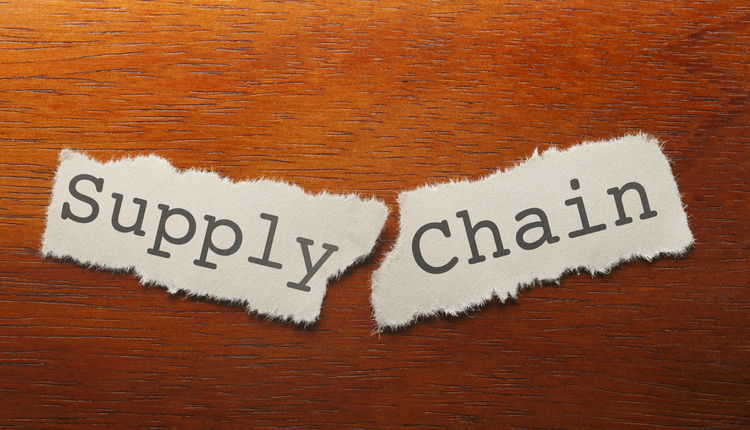Route 2013 is fraught with challenges for ecommerce vendors. Retail trendsetters Amazon, Wal-Mart, and eBay have rolled out new services designed to give them even larger market share, parcel shipping carriers are significantly increasing their rates, and more states will introduce sales taxes for online purchases.
According to Experian Marketing Services' Cyber Monday survey, Amazon.com remained the top visited retail site while Wal-Mart received the second most visits. Best Buy was the third most visited site with Target and JC Penney rounding out the top five. Among the top five sites, Amazon saw the biggest year-over-year growth at 36%.
In addition to these external pressures, etailers struggle with the internal constraints of shrinking margins, lack of capital, and a plodding economy. To stay competitive, they must lower their cost structure while simultaneously driving sales and volume. The best way to do this is to decrease shipping costs while increasing customer satisfaction.
Understanding and managing the inverse relationship between shipping and customer satisfaction is key to achieving clear competitive advantage. When shoppers are happy with both product pricing and shipping costs, they will reward the retailer with: more visits, increase in number and value of purchases, more shares/referrals, better reviews, increased loyalty and more repeat business.
Lower Shipping Costs to Increase Customer Satisfaction
The best ways to increase customer satisfaction are to offer free shipping, accelerate and guarantee shipment times, and to offer a clear, simple, and cost-effective returns policy.
If you do not offer free shipping services, your customers will find them somewhere else.
Free shipping has become a customer imperative. According to a 2012 comScore survey, 72% of online customers will turn away from a website that charges for shipping and look for one that doesn’t. In return, 52% of respondents to a 2011 Stamps.com survey said that free shipping increased their average revenue per order by $8.00 or more.
The recent comScore’s Cyber Monday report found more than half of e-commerce transactions during the last three weeks of November included free shipping, with a peak of 57% during the week ending Sunday, November 25th. During the first five weeks of the holiday season, consumers spent an average of 42% more on free shipping transactions than on paid shipping transactions, including a 51% higher average order value during the week ending November 25.
A good case in point is an audio retailer founded in 2007 with free shipping as a foundational principle. The founder and CEO, who was previously a UPS executive, turned to an independent advocate to help optimize his company’s supply chain spend. Together they were able to reduce spend by 15%, which enabled them to adopt free shipping to increase customer satisfaction. This competitive advantage has paid off with phenomenal growth. The company placed in at #110 on the 2011 Inc. 500 list.
Shipping Guarantees, Speed You Can Count On – On October 9, 2012 Wal-Mart announced same-day delivery for selected cities across the country. Amazon CEO Jeff Bezos has stated that they are striving for same-day delivery in metropolitan areas, too. While smaller etailers may not be able to get products to their customers this quickly, they can try to speed up deliveries and to make delivery guarantees.
A good success story here is the online beauty retailer that was losing sales due to its lack of physical West Coast presence. The etailer decided to counter this problem by guaranteeing three-day shipping on all orders of $50 and more. But in order to make this guarantee viable, they had to cut $2 million in annual shipping costs. Optimizing their shipping spend helped satisfy customers and delivered an additional “found” $0.5 million to invest in website improvements.
Return Shipping, Optimize Inbound – According to comScore, 63% of online customers look for a returns policy before making a purchase. Almost 50% of survey respondents said a lenient, easy-to-understand returns policy would lead them to shop more often with a retailer, and to recommend the retailer to a friend.
A solid returns strategy paid off for a retail store service and maintenance provider that was paying list price for parts returns and spending twice as much for inbound vs. outbound shipments. Although the company had otherwise optimized its shipping spend, returns costs were going through the roof, despite the fact that there were no pick-up or delivery costs. Working with reverse logistics experts, the company was able to figure out why its returns costs were so high and to correct the situation.
Customer satisfaction isn’t the only thing these companies achieved by cutting their shipping spend. They also found the budget to fund website enhancements, increase promotions/advertising, make infrastructure investments, hire more experienced personnel and increase their product service mix. Properly investing in experienced personnel, either internally or externally, is crucial to the overall success of etailers in today’s environment.
According to Experian Marketing Services' Cyber Monday survey, Amazon.com remained the top visited retail site while Wal-Mart received the second most visits. Best Buy was the third most visited site with Target and JC Penney rounding out the top five. Among the top five sites, Amazon saw the biggest year-over-year growth at 36%.
In addition to these external pressures, etailers struggle with the internal constraints of shrinking margins, lack of capital, and a plodding economy. To stay competitive, they must lower their cost structure while simultaneously driving sales and volume. The best way to do this is to decrease shipping costs while increasing customer satisfaction.
Understanding and managing the inverse relationship between shipping and customer satisfaction is key to achieving clear competitive advantage. When shoppers are happy with both product pricing and shipping costs, they will reward the retailer with: more visits, increase in number and value of purchases, more shares/referrals, better reviews, increased loyalty and more repeat business.
Lower Shipping Costs to Increase Customer Satisfaction
The best ways to increase customer satisfaction are to offer free shipping, accelerate and guarantee shipment times, and to offer a clear, simple, and cost-effective returns policy.
If you do not offer free shipping services, your customers will find them somewhere else.
Free shipping has become a customer imperative. According to a 2012 comScore survey, 72% of online customers will turn away from a website that charges for shipping and look for one that doesn’t. In return, 52% of respondents to a 2011 Stamps.com survey said that free shipping increased their average revenue per order by $8.00 or more.
The recent comScore’s Cyber Monday report found more than half of e-commerce transactions during the last three weeks of November included free shipping, with a peak of 57% during the week ending Sunday, November 25th. During the first five weeks of the holiday season, consumers spent an average of 42% more on free shipping transactions than on paid shipping transactions, including a 51% higher average order value during the week ending November 25.
A good case in point is an audio retailer founded in 2007 with free shipping as a foundational principle. The founder and CEO, who was previously a UPS executive, turned to an independent advocate to help optimize his company’s supply chain spend. Together they were able to reduce spend by 15%, which enabled them to adopt free shipping to increase customer satisfaction. This competitive advantage has paid off with phenomenal growth. The company placed in at #110 on the 2011 Inc. 500 list.
Shipping Guarantees, Speed You Can Count On – On October 9, 2012 Wal-Mart announced same-day delivery for selected cities across the country. Amazon CEO Jeff Bezos has stated that they are striving for same-day delivery in metropolitan areas, too. While smaller etailers may not be able to get products to their customers this quickly, they can try to speed up deliveries and to make delivery guarantees.
A good success story here is the online beauty retailer that was losing sales due to its lack of physical West Coast presence. The etailer decided to counter this problem by guaranteeing three-day shipping on all orders of $50 and more. But in order to make this guarantee viable, they had to cut $2 million in annual shipping costs. Optimizing their shipping spend helped satisfy customers and delivered an additional “found” $0.5 million to invest in website improvements.
Return Shipping, Optimize Inbound – According to comScore, 63% of online customers look for a returns policy before making a purchase. Almost 50% of survey respondents said a lenient, easy-to-understand returns policy would lead them to shop more often with a retailer, and to recommend the retailer to a friend.
A solid returns strategy paid off for a retail store service and maintenance provider that was paying list price for parts returns and spending twice as much for inbound vs. outbound shipments. Although the company had otherwise optimized its shipping spend, returns costs were going through the roof, despite the fact that there were no pick-up or delivery costs. Working with reverse logistics experts, the company was able to figure out why its returns costs were so high and to correct the situation.
Customer satisfaction isn’t the only thing these companies achieved by cutting their shipping spend. They also found the budget to fund website enhancements, increase promotions/advertising, make infrastructure investments, hire more experienced personnel and increase their product service mix. Properly investing in experienced personnel, either internally or externally, is crucial to the overall success of etailers in today’s environment.











